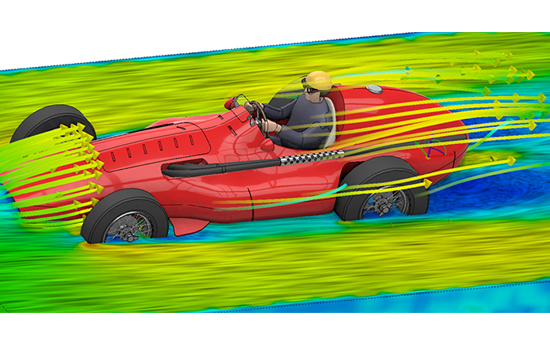ANSYS a company which develops, markets, and supports engineering replication software used to forecast how product designs will act in real-world environment. Engineering simulation is their sole focus. Their latest release of ANSYS 19.2 software has updated tools that will support autonomous vehicles designing, additive manufacturing, optics and assembly. Some of the important features of ANSYS 19.2 are:
Automotive System
ANSYS 19.2 introduced the ANSYS VRXPERIENCE, which permits operators to fully and realistically simulate independent vehicles using real-world customizable conditions.
Increased Use of Optics
ANSYS 19.2 contains a capital of general optical imitation tools, such as ANSYS SPEOS which is one solution for imitation of optics and optoelectronics. These new tools permit imitation of lighting, interior and exterior lighting, cameras and LiDARs, and delivers designers with the ability to assess optical performance while reducing expansion time and costs.
Digital Twins Bug
New capabilities of ANSYS 19.2 make it easier to shape, authenticate and organize digital twins more quickly. Now, users can create images of 3D fields of static ROMs (Reduced Order Modeling) and view simulation results, such as speed and flow rate, on the 3D geometry of the twin.
Preservative Manufacturing
ANSYS 19.2 continues to deliver the Additive Suite and Additive Print tools for imagining 3D printing processes. It also offers a beta version of Additive Science. This technology allows operators to simulate the micro structure and advance insight into the properties of the final published part.
Computerized Fluid Dynamics
In the fluids suite, ANSYS 19.2 delivers new features to accelerate CFD simulations for boosting productivity. It works on the basis of Mosaic meshing technology.
Discover Live Updates
This feature gives a boost to its abilities by allowing users to account for the angular speed of rotating components in a fluid simulation. This is especially useful for understanding the result of wheel rotation on a vehicle and detecting real-world trends in virtual designs.
Physical Simulations
The new Material Designer feature can make full models of fiber-filled, woven or lattice resources, and then calculate equivalent belongings for use in larger-scale imitations. In topology optimization, ANSYS 19.2 has extra loading options, manufacturing restraints that are perfect for preservative manufacturing, and a sole lattice optimization capability.
Overall, the features mentioned above shows some additional features incorporated in ANSYS 19.2. Precisely, these additional features would improve the productivity of ANSYS and would enhance the overall user experience.

